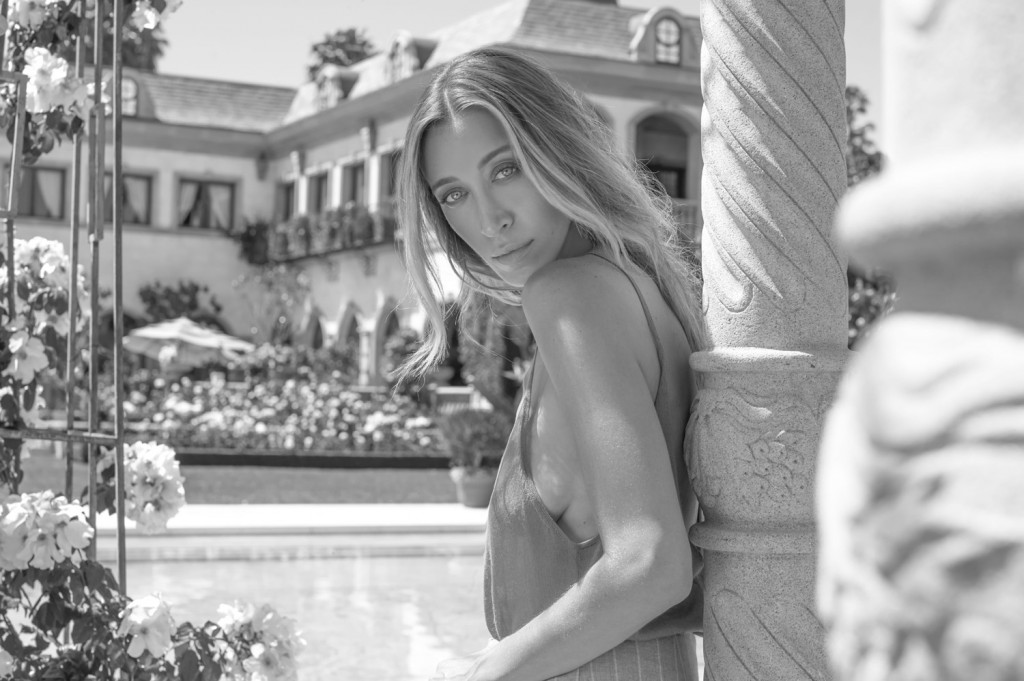
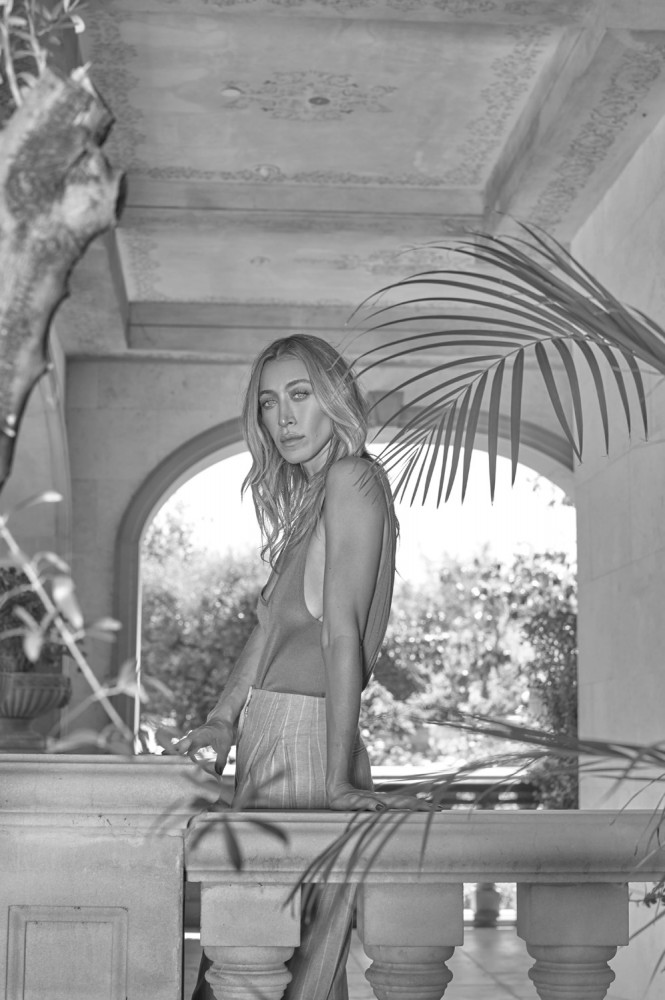
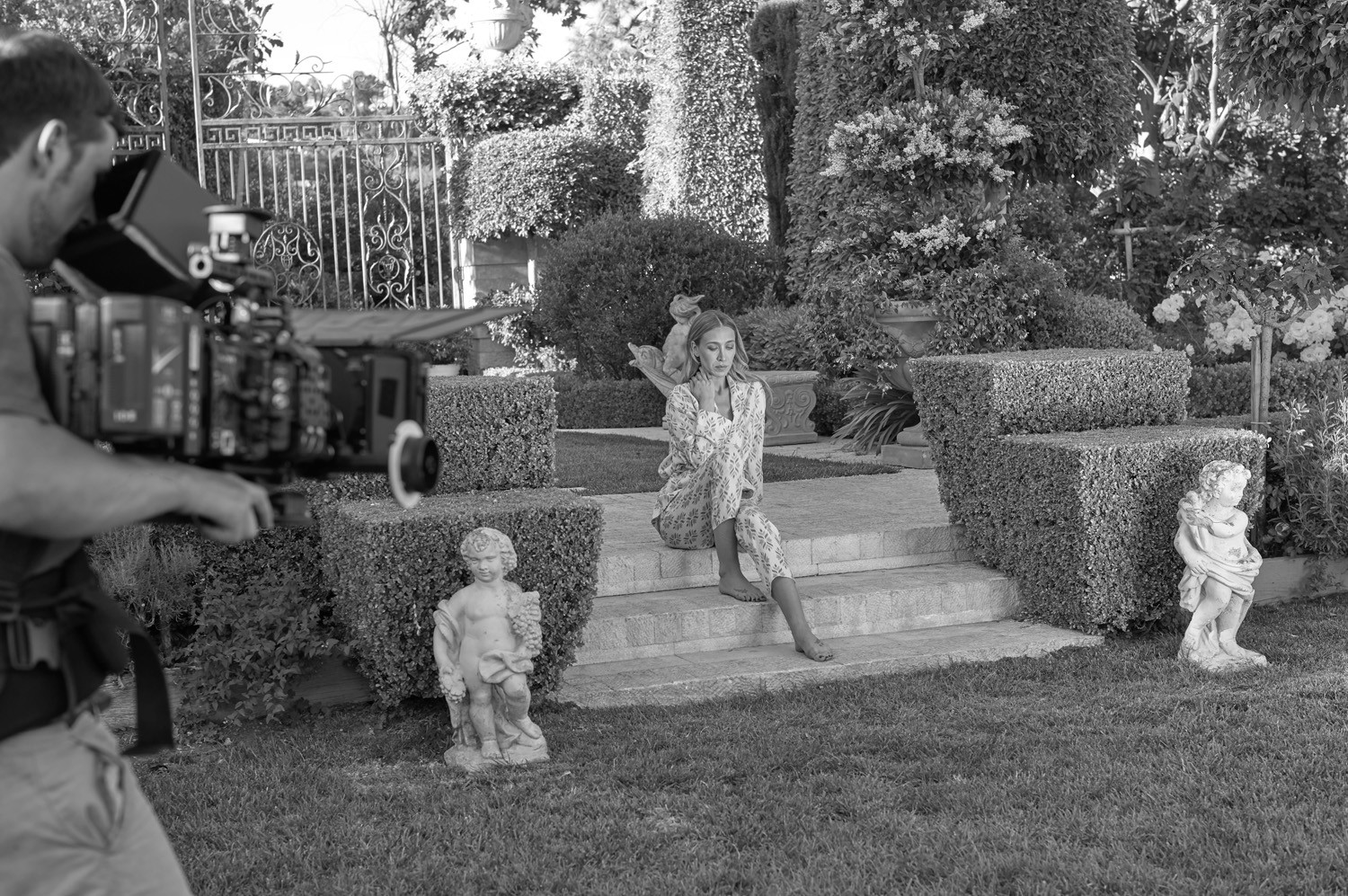
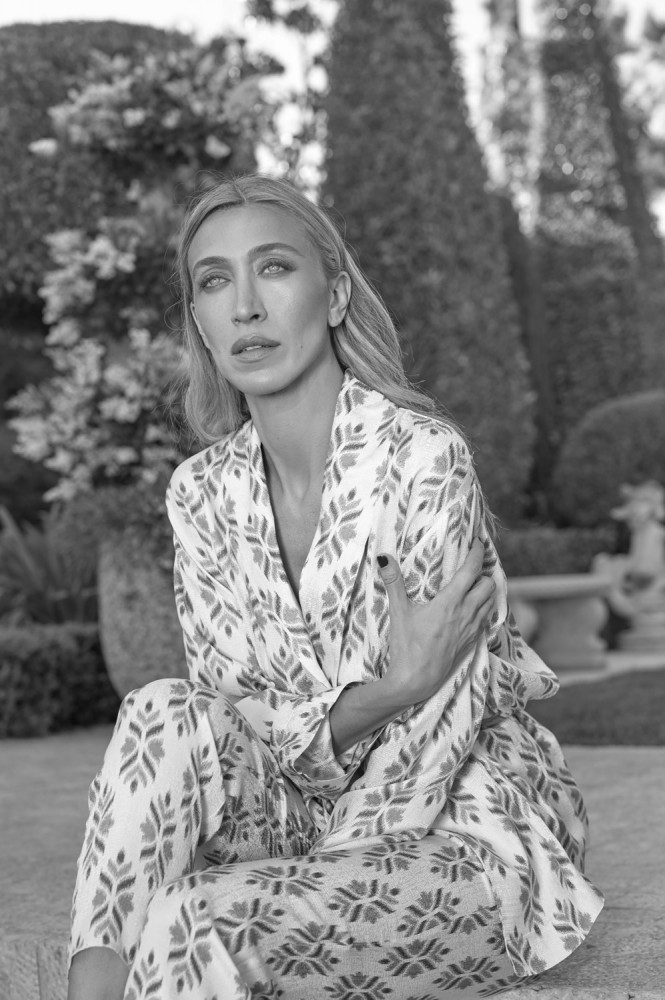
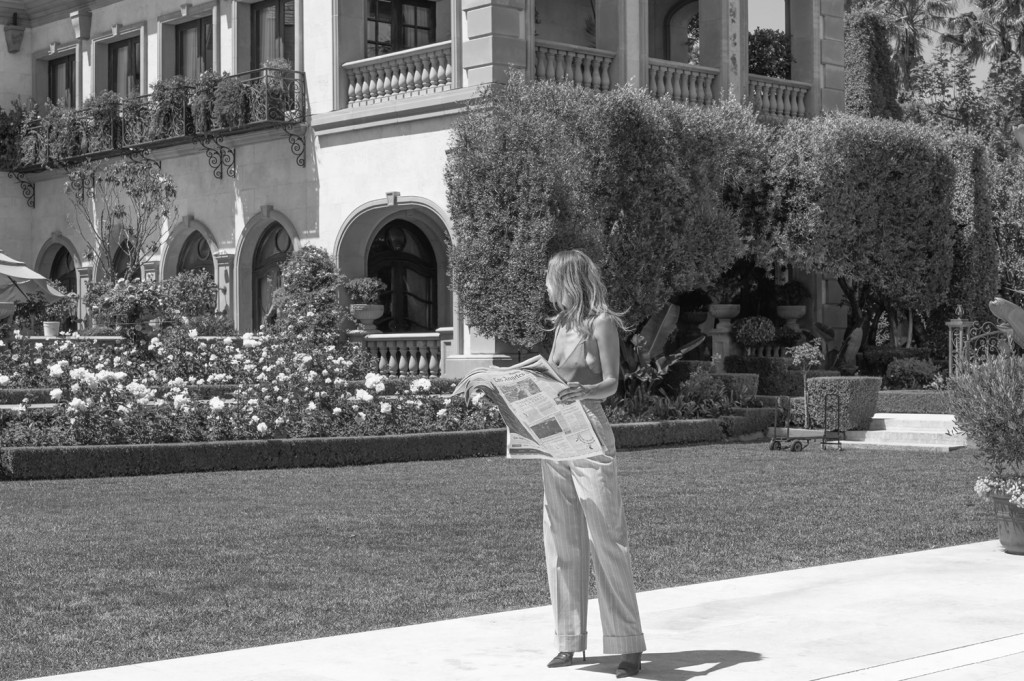
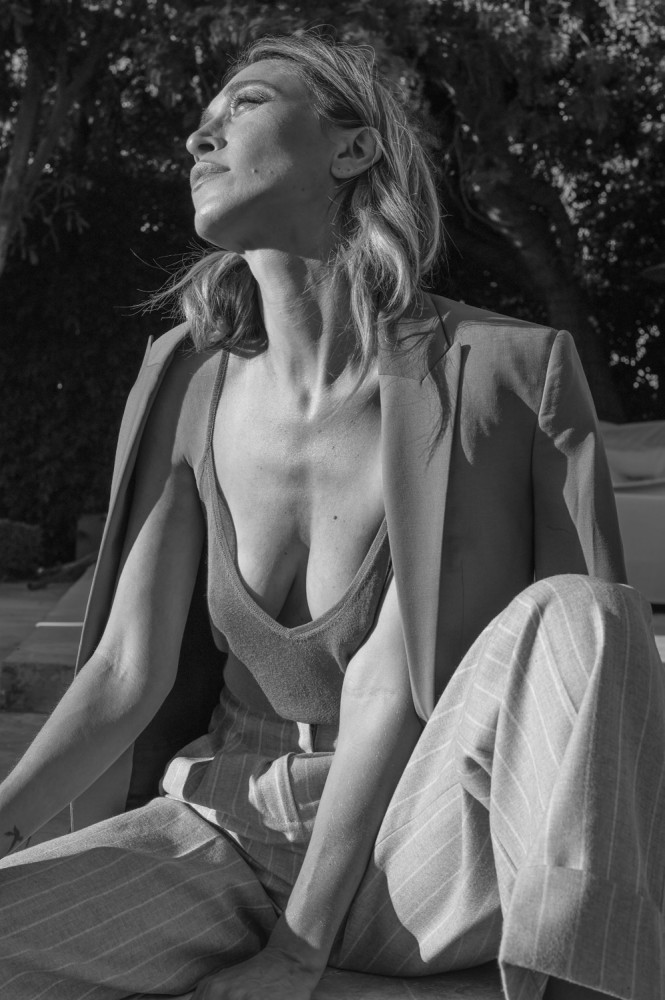
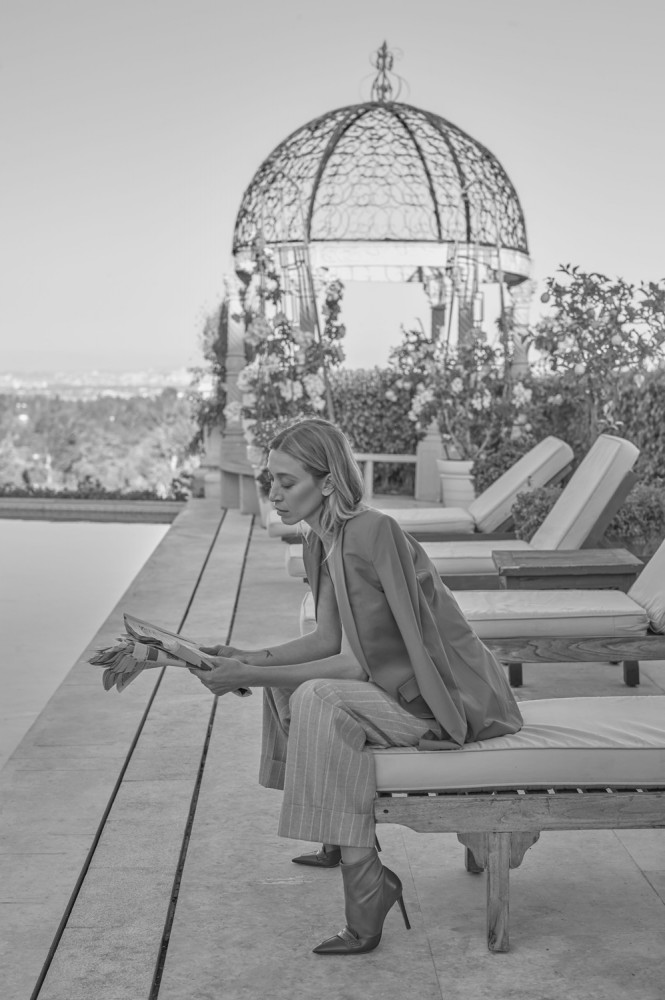
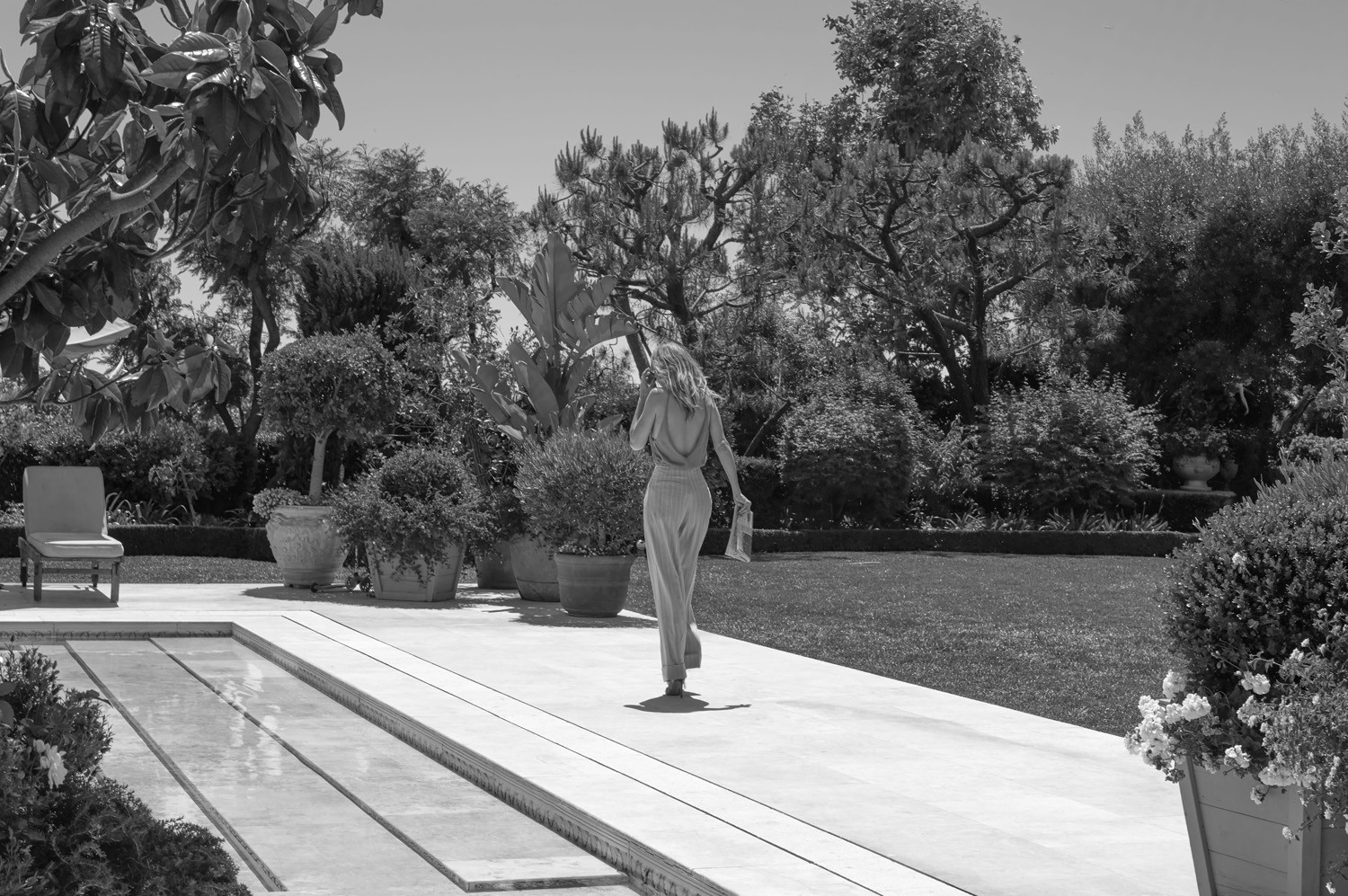
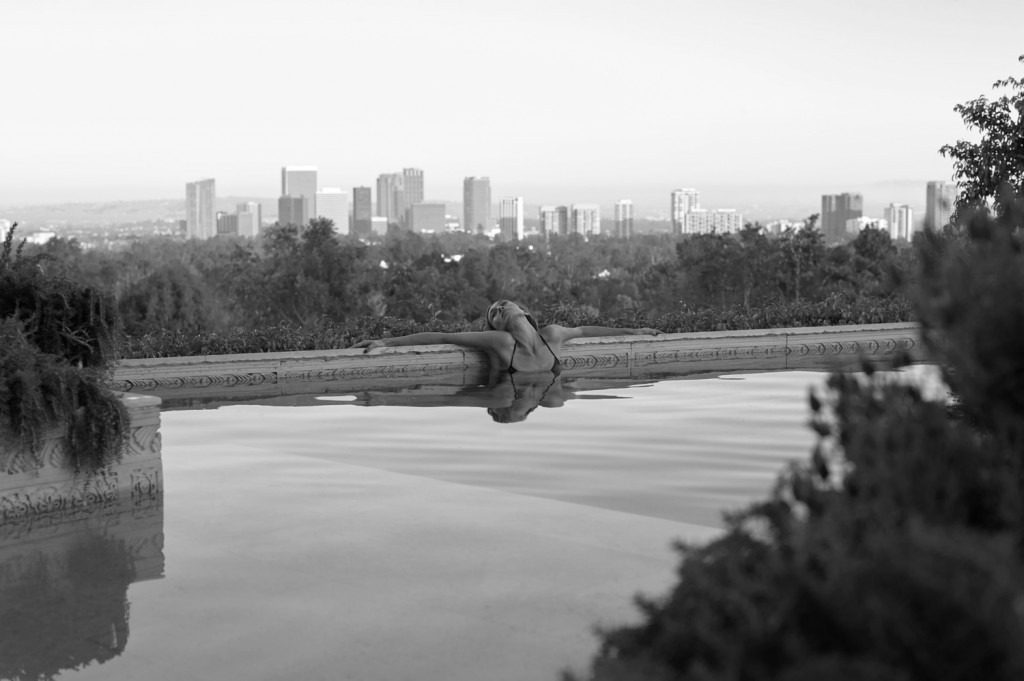
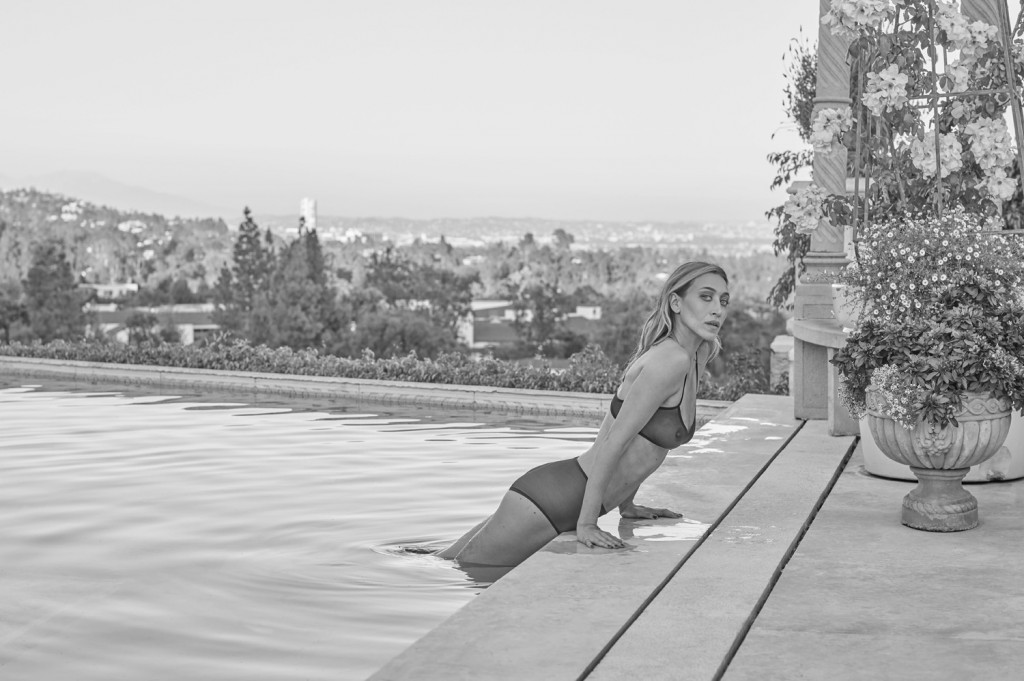
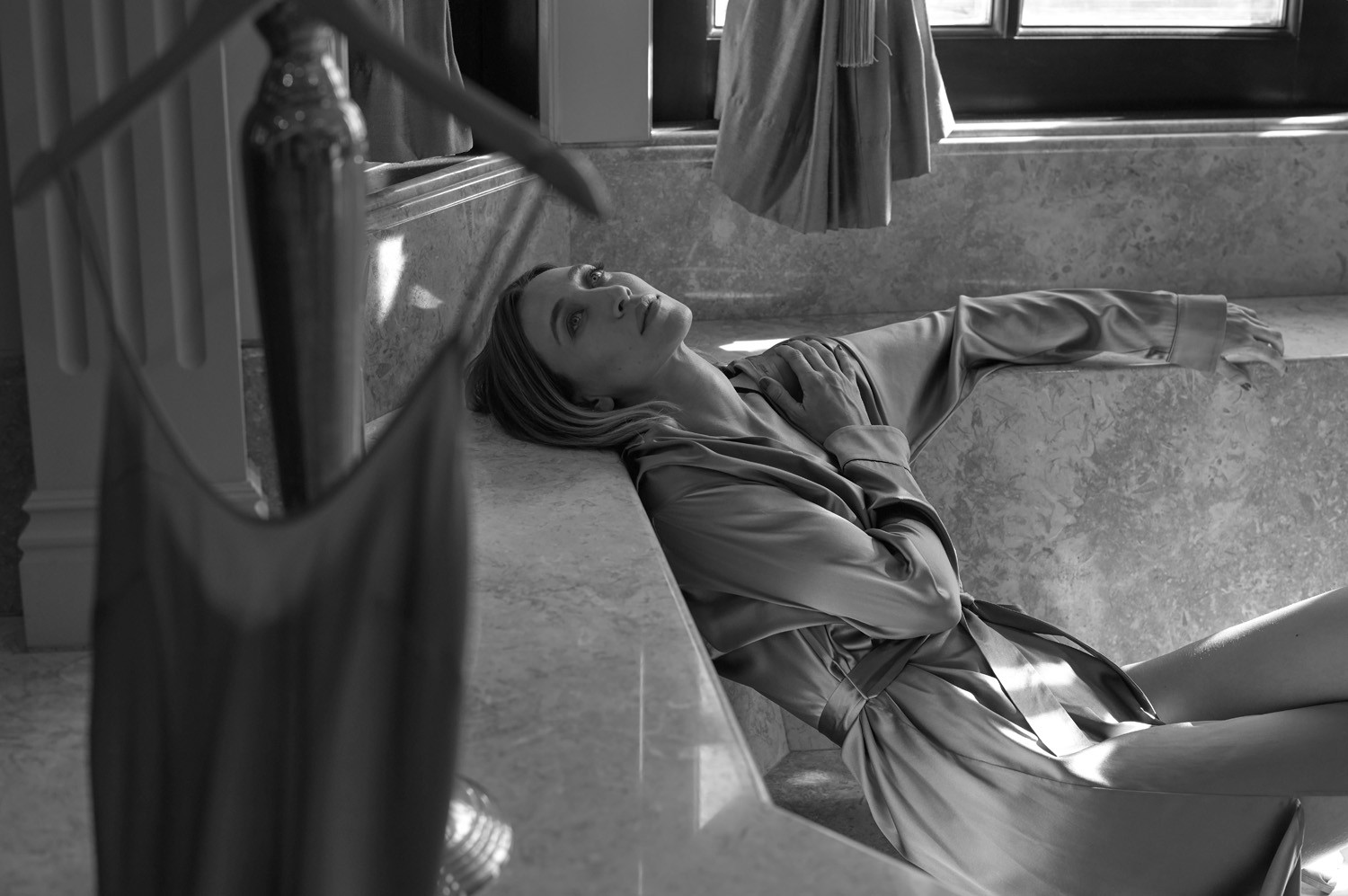
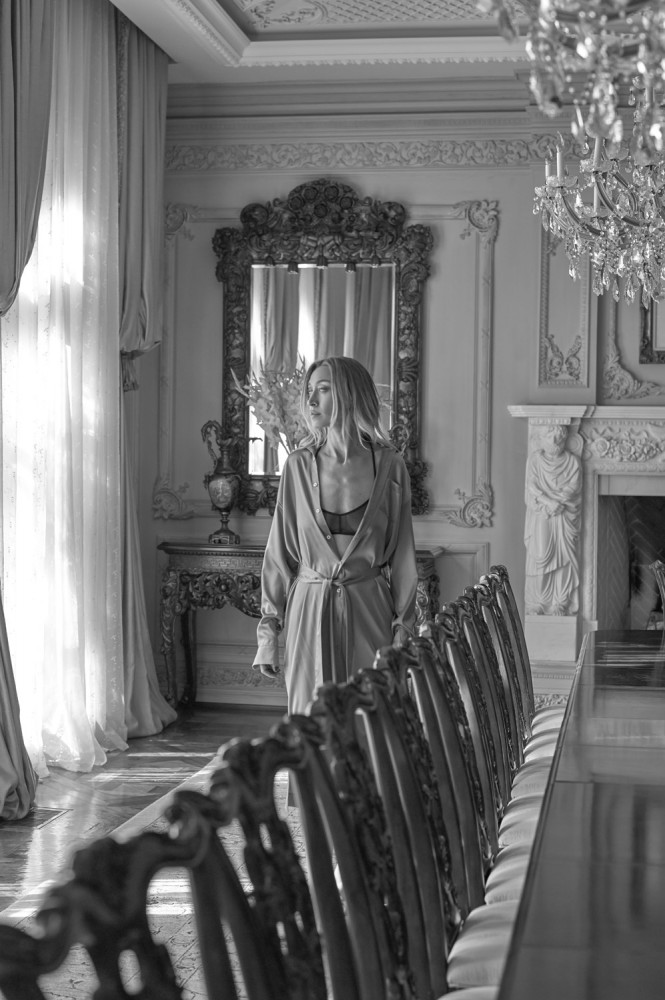
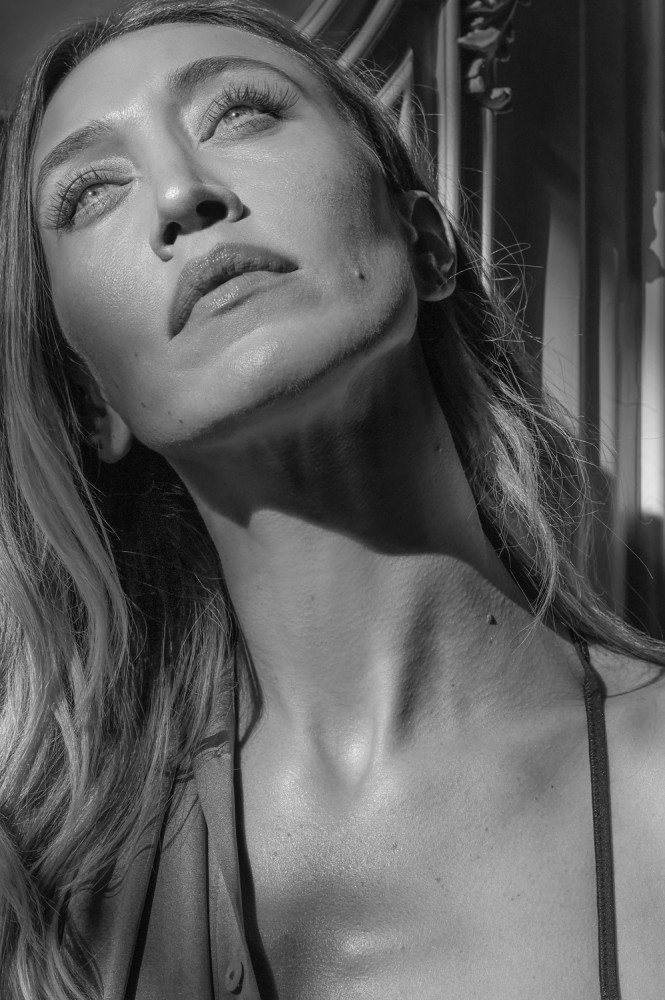
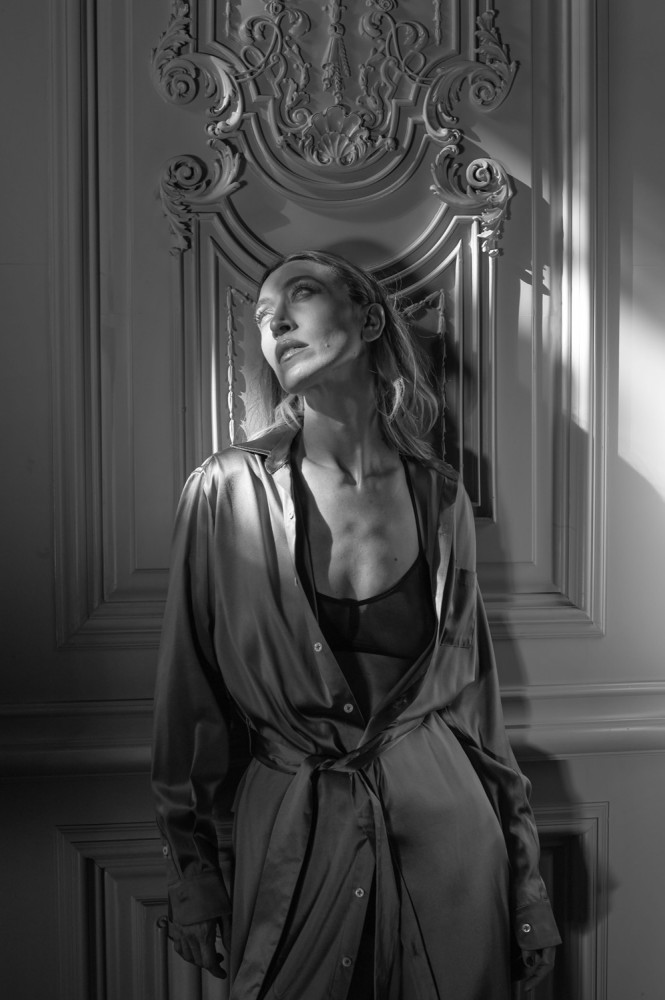














INTERVIEW
Isabella Lombardini
PHOTOGRAPHY, CREATIVE DIRECTOR & STYLING Isabella Lombardini MAKEUP Kira Nasrat HAIR Chelsea Cole MODEL Alana Hadid CAMERA Leica S2 with Summarit-S 70 f/2.5 ASPH.
The very successful and well-known business woman, Alana Hadid, is living her dream in Hollywood. In ‘A Woman of Hollywood’, Isabella Lombardini uses subtle monochrome to stage an authentic series featuring Hadid.
You’re currently living in London, and you work internationally; you lived previously in Los Angeles and New York, and have an Italian background. If people ask you where your home is, what do you say?
I have always gravitated strongly towards Italy and its culture, even though I was born in the U.K. My father recently explored his family tree and discovered that a lot of his ancestors came from Lombardy, in northern Italy. I’m fortunate to travel often for my work, so I experience many cultures, and I manage to adapt to and feel at home in a new environment very easily.
What stages has your photographic path passed through so far? What has influenced you?
When I first started taking pictures, I incorporated ideas from the beauty culture of 20th century Hollywood. Actresses like Anita Ekberg, and the 90s supermodels Linda Evangelista, Karen Mulder, Tatiana Patitz - that was all I knew. I used to watch films, documentaries, and read many books about these women. I was fascinated by their demeanour - they looked expensive. These women are still relevant to me today, in my life and in my work. I watch a lot of films - anything by Federico Fellini and Paul Verhoeven to Luca Guadagnino. By the Sea with Angelina Jolie moved me in ways I never thought a film possibly could. Set on the French Mediterranean coastline in the 70s, everything about it – for my eyes and European taste – was of exceptional, aesthetic beauty.
Women are always at the centre of your photographs and your films. They appear elegant, independent and often sensual. What role do they play in your photography?
As a woman, I prefer photographing other women because I have a greater understanding and ‘insight’ into the way in which we work. How women’s minds process the world, what we would consider beautiful, what enables us to free ourselves from another’s authority or influence, what causes our eyes to fill with tears, how we love – in essence, that which moves us to feel on a more profound level, etc. I do also photograph men, but not often. A woman doesn’t always need to dress sensually to be sensual. I try to discover and present beauty through an unorthodox lens, it depends on the photograph’s purpose. Sometimes the women wear no make-up, sometimes they do. I might suggest that a woman wear a man’s tailored Prada suit, other times a vintage square-neckline Versace dress; but it must work to feel authentic and subtle - never over-processed.
You photographed ‘A Woman of Hollywood’ for the S magazine. What’s the story about?
Alana (Hadid) and I met in Los Angeles at the dinner party of a mutual friend. Our friendship followed soon after. During coffee on Melrose Avenue one morning, we both agreed we wanted to create something timeless. Alana, who is the owner of numerous companies, is an incredible business woman. I wanted to photograph her in her work attire.
Do you look for specific model types for your series, or do you choose certain characters?
I prefer to work with experienced models. I like that there is some accumulated history in their eyes. They can have a wealth of knowledge and intelligence, and, if I can relate to them through great conversations, then I know the photographs we take will be good. I feel like Parisian women seem to have a great perspective on beauty, they always look effortless. I like to see real skin texture. If she has huge waves in her hair or heavy eye make-up, then she should wear no foundation, perhaps only a face oil – so it appears undone yet worn.
Do you prefer to work on location? Why?
With a studio, it is more scripted, whereas with a location, it is less calculated. It’s more of an organic environment to work in. Often, my photographs are referred to as very European, which I do agree with. I loved working at Lake Como, in the south of France, etc., as the settings were unparalleled. I recently visited Mali Losinj in Croatia to shoot an editorial for Madame Figaro, and some friends and I turned it into the greatest vacation.
You photograph mostly in black and white, sometimes also with soft, similar toned colours. Why is that?
Black and white immediately removes any unrequested feelings that colour might push. When I was young, I used to look at the work of Irving Penn, Patrick Demarchelier and Helmut Newton. I felt compelled, driven, to take timeless images in black and white. Though recently I have wanted to shoot more images in colour – it’s a new test.
What about film? Do you take the videos yourself or do you have someone else do it for you? What role do you play as far as directing is concerned?
My first short film, that I worked on in 2016, is currently in post-production. Apart from the fact that we had zero budget, myself and the lead actress are very close friends, and this film is a significant one for us. I decided to write, direct and produce it: firstly because I knew I was capable of it, but more importantly because I wanted to. I had a great director of photography working on most of that video, though I was also heavily involved in the filming. These days, I have a director of photography for all film work, so I can focus on directing only. I am a Virgo - I suppose that explains a lot. On set I am very hands on, I like to be in control. I have a strong point of view, and I am a precision planner by nature – to a fault. Sometimes I am even the stylist or the make-up artist. I can relate to Tom Ford when he said ‘I am a perfectionist to the point of insanity’.
In your case, what is the relationship between film and stills? Does one complement the other? Does one side gain more weight?
Both are smoke and mirror worlds, though I like to separate the two. My editorial and beauty photographs are centred within the fashion industry, whilst my film work is a purely artistic endeavour. It is inevitable that my aesthetics will translate through into my film work, the locations, interior, casting, clothes - all things I pay close attention to in film as I do for my photographs.
You are still quite young: how do you hope to evolve as a photographer and film director? What is your vision?
This is difficult to answer, as I think you should never have a finite objective. I know that I will continue to experiment and learn. Of course, I would love to shoot covers and editorials for Vogue Italia, Beauty Papers, Vogue Paris, Vanity Fair, etc., and campaigns for brands like Alexandre Vauthier, The Attico, The Row, etc.. The most sensual accessory a woman can own is a great set of heels. It elongates our legs, emphasises our calf muscles, provides us with a certain je ne sais quoi. I want to photograph and film more footwear campaigns. My friend Amina Muaddi has the most exquisite taste; she works a lot with Vauthier designing shoes for his runway collections, I would love to work with her. I also adore photographing jewellery – show me those statement earrings! I do have a few short films in the pipeline, possibly a coffee table book, let’s see. Everything happens when it should.
You photographed with your S 006. In general, is it different to photograph in medium format?
I love the SL and the S2-P equally. They are two of the most impressive cameras I have ever worked with. Photographing with medium format is like entering a new solar system. I agree with Henri-Cartier-Bresson – the Leica is a ‘visual extension of the eye’. It really is the camera, and I won’t work with anything else.